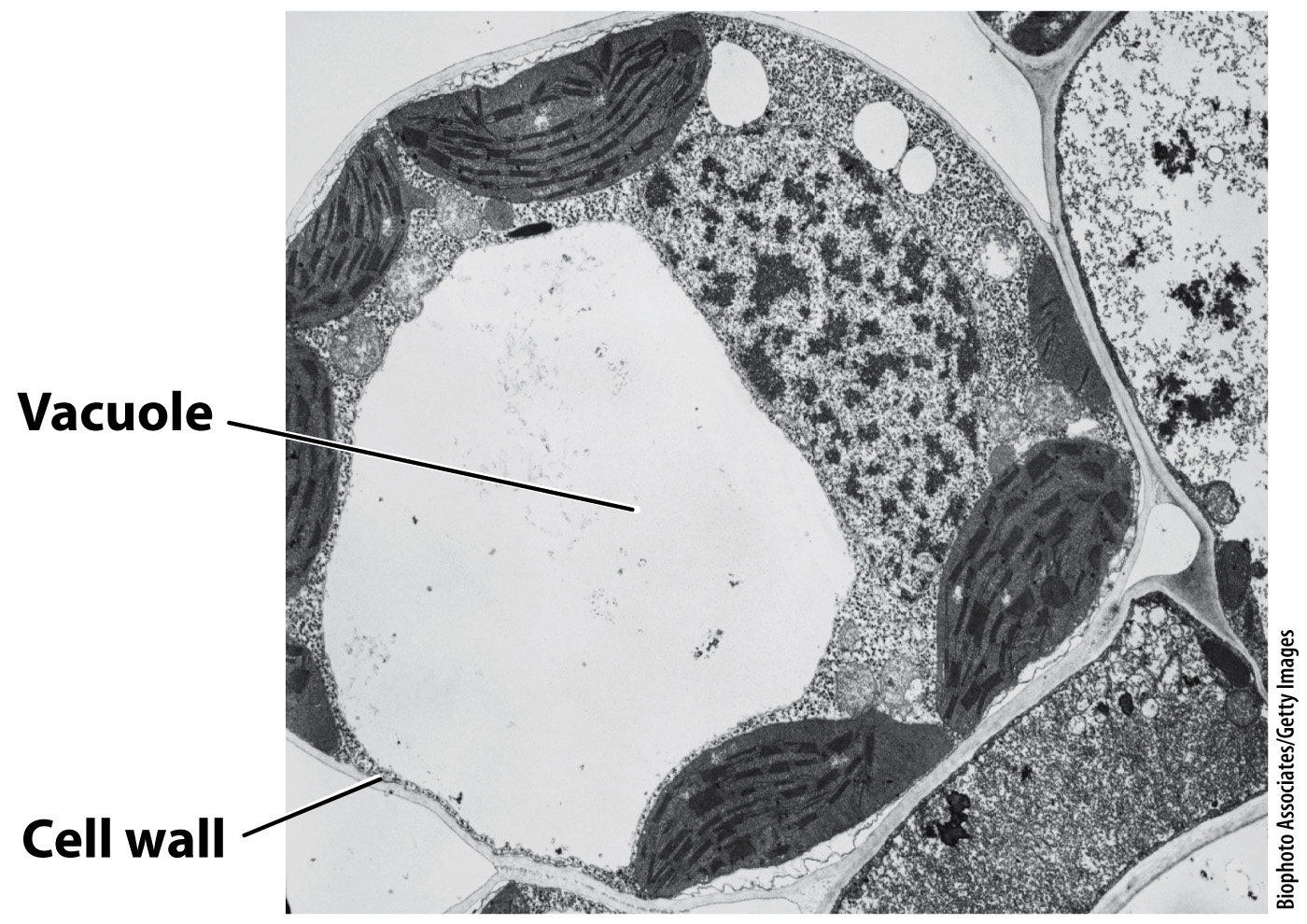The cell wall provides another means of maintaining cell shape.
As we have seen, animals often maintain cell size by using active transport to keep the inside and outside of the cell isotonic. How do organisms such as plants, fungi, and bacteria maintain cell size and shape? A key feature of these organisms is the cell wall surrounding the plasma membrane (Fig. 5.15). The cell wall plays a critical role in the maintenance of cell size and shape. When Hooke looked at cork through his microscope, what he saw was not living cells but the remains of cell walls.

The cell wall provides structural support and protection to the cell. Because the cell wall resists expansion, it allows pressure to build up in a cell when it absorbs water. Recall that when an animal cell, like a red blood cell, is placed in pure water, it swells until it bursts. By contrast, when a plant cell is placed in pure water, water enters the cell by osmosis until the pressure created by the cell wall’s resisting further expansion opposes the driving force for the water to enter.
The force exerted by water pressing against an object is called hydrostatic pressure, or turgor pressure. The pressure exerted by water inside the cell on the cell wall provides structural support for many organisms that is similar in function to the support provided by animals’ skeletons. In addition, plant and fungal cells have another structure, called the vacuole (different from the contractile vacuole), that can absorb water and also contribute to turgor pressure (Fig. 5.15). It is therefore easy to understand why plants wilt when dehydrated—
The cell wall is made up of many different components, including carbohydrates and proteins. The specific components differ depending on the organism. The plant cell wall is composed of polysaccharides, one of the best known of which is cellulose, a polymer of the sugar glucose. Cellulose is the most abundant biological material in nature. Many types of algae have cell walls made up of cellulose, as in plants, but others have cell walls made of silicon or calcium carbonate. Fungi have cell walls made of chitin, another polymer based on sugars. In bacteria, the cell wall is made up primarily of peptidoglycan, a mixture of amino acids and sugars.